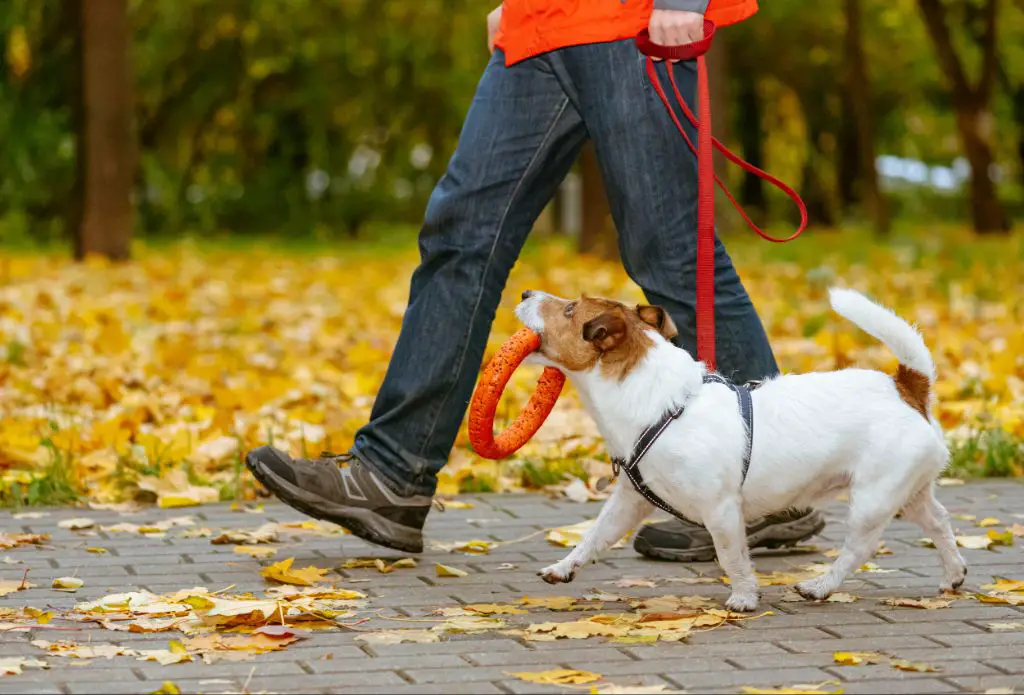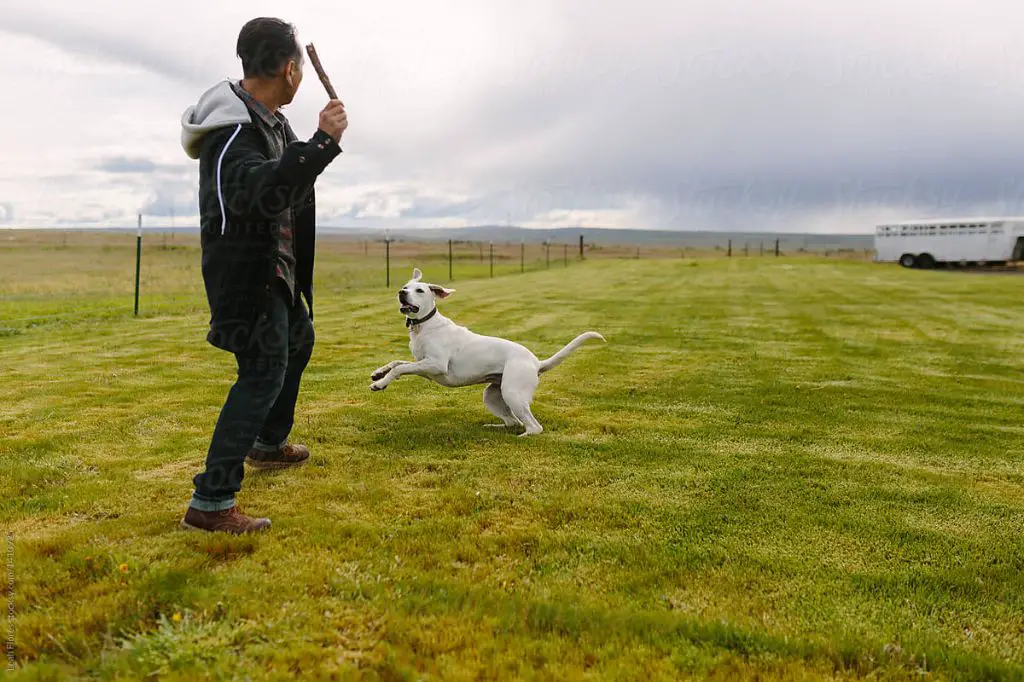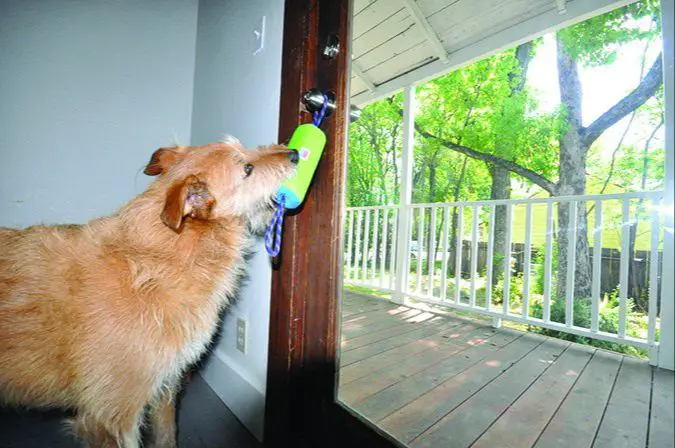Introduction
Working dog owners face unique challenges when it comes to providing enough exercise and stimulation for their furry companions. While having a predictable schedule is important for any dog, it becomes especially critical when owners are away at work for 8+ hours a day. Without proper care, dogs left alone can become bored, anxious, and even destructive.
Experts emphasize the importance of providing adequate physical and mental stimulation for dogs before and after the workday. This helps them settle in while owners are gone and releases pent-up energy when they return. The goal of this article is to provide a sample daily schedule with tips to keep working dogs happy and healthy.
With some planning and commitment to maintaining a routine, even busy professionals can ensure their dogs get the care they need.
Morning Walk
An early morning walk is one of the best ways to start the day for both you and your dog. Getting outside first thing in the morning ensures your dog gets exercise when their energy levels are highest. The American Kennel Club recommends taking your dog on a walk first thing in the morning, as soon as you wake up and before breakfast (The Importance of a Morning Routine: Why I walk my dog …).
Aim to walk your dog for at least 30-60 minutes in the morning if possible. The duration of the walk depends on your dog’s age, breed, and energy levels. Younger dogs and high energy breeds like Labradors will need longer walks than older dogs. Aim to walk far enough for your dog to burn off some excess energy. Most healthy adult dogs benefit from at least 30-60 minutes of brisk walking per day (The Benefits of Walking Your Dog – VCA Animal Hospitals).

Going for a longer walk in the morning sets you and your dog up for success during the day. It provides important physical and mental stimulation that reduces anxiety, boredom, and destructive behaviors in your home. Morning walks are a great way to bond with your dog and establish a healthy daily routine.
Feeding Time
Establishing a regular feeding routine is important for your dog’s health. Most experts recommend feeding adult dogs twice a day, once in the morning and once in the evening (PetMD).
When determining portions, you’ll want to feed your dog the amount recommended based on their weight, age, and activity level. Use your dog food’s feeding guidelines or this general guide as a starting point. Monitor your dog’s weight and adjust as needed.
Pick a high quality dog food designed for your dog’s life stage and breed size. Look for foods with meat as the first ingredient and avoid fillers. It’s also best to stick to one food instead of constantly switching to avoid stomach upset.
Potty Break
It’s important to let your dog out for a potty break midday, especially if you have a puppy or older dog. According to Pet Minders, midday potty breaks provide a welcome reprieve for all dogs, but can be a necessity for some https://petminders.com/midday-dog-walks-important/. During the midday heat, it’s recommended to only allow potty breaks and avoid prolonged time outdoors according to a local veterinarian https://wtop.com/animals-pets/2023/07/potty-breaks-only-for-dogs-during-midday-summer-heat-says-local-veterinarian/.
If you work outside the home, consider hiring a dog walker or sending your dog to doggy daycare to provide that midday potty break. According to redditors on r/Dogtraining, a healthy adult dog should have no issue holding their bladder from a 10pm last walk to an 8am first walk the next morning https://www.reddit.com/r/Dogtraining/comments/kzvwud/when_do_you_take_your_dogs_out_for_the_last_potty/. But puppies and older dogs may still need a midday trip outside.
Afternoon Walk
When you return home from work, your dog will likely be excited to see you and ready for some activity. An afternoon walk is a great way to meet their need for exercise and bonding time with you. According to this article, late afternoon can be an ideal time for a longer walk, game of fetch, or training session.
Plan at least 30-60 minutes in the late afternoon or early evening for a brisk walk or jog with your dog. This will help them burn off pent up energy from being alone all day. Bring toys along to play fetch at a park or incorporate training during the walk to mentally stimulate your dog.
If the weather doesn’t permit a walk, engage in games like hide and seek or fetch indoors. Spend 10-15 minutes training your dog using positive reinforcement. Work on commands, tricks, or agility skills. These afternoon activities will meet your dog’s needs for physical and mental exercise.
Dinnertime
The evening meal for your dog should typically be served around 6-7pm, about 12 hours after the morning meal (https://www.wellnesspetfood.com/blog/how-to-create-a-feeding-schedule-for-your-dog). When it comes to amount, feed the same quantity of food at dinner as you did for breakfast. For an adult dog being fed twice a day, the general guideline is to feed 1/2 cup to 1 cup of dry dog food per 10-20 pounds of body weight (https://vcahospitals.com/know-your-pet/feeding-times-and-frequency-for-your-dog). So a 40 pound dog would get 2-4 cups of food at each meal. Consult your vet if you are unsure of the ideal amount of food for your dog’s size, age, and activity level.

Keeping dinnertime on a consistent schedule allows your dog’s body to adapt and aids digestion. Decide on a set evening meal time that works with your schedule, such as right before your own dinner or after returning from the dog’s evening walk. Feed your dog in the same spot each night and pick up any uneaten food within 10-15 minutes.
Playtime
In the evening after dinner is an important time for play and bonding with your dog (Source). Set aside at least 30 minutes for quality playtime. Try interactive toys like ropes, balls, and squeaky toys that you can play together with your dog. This is a great opportunity to strengthen your bond through play. Playing games like tug of war and fetch are fun ways to tire out your dog before bedtime.

Make sure you have a variety of toys on hand to keep your dog engaged and entertained. Rotate toys so your dog doesn’t get bored. Puzzle toys and treat dispensing toys provide mental stimulation as well. Stuff a Kong with your dog’s kibble or peanut butter and let them lick out the contents. Activities like these will stimulate their mind and body.
Potty Break
Some of the most important training for a puppy or young dog is getting them accustomed to a consistent potty schedule. This includes taking them out for regular bathroom breaks first thing in the morning, after meals and playtime, and right before bed. According to dog experts, a healthy adult dog should be able to hold their bladder for 8-10 hours overnight as long as their last potty break is right before bedtime (Dogtime, 2022).
For working dog owners, providing a late evening potty break around 10 PM is recommended before crating your dog for the night. Taking your dog out at the same time each night reinforces the schedule and helps them learn to hold it until morning. Consistency with the timing of this last bathroom break helps establish a routine that your dog can depend on. As long as you allow them a final trip outside right before bed, most adult dogs will comfortably sleep through until their first outdoor trip in the morning. Just be sure to set your alarm and take them out first thing when you wake up!

Bedtime
Establishing a relaxing bedtime routine can help prepare your dog both physically and mentally for sleep. Try to wind down with calm activities in the 1-2 hours before bed. Going on a leisurely walk allows your dog to take care of any final potty business and work out excess energy.
It’s also important to stick to a consistent bedtime schedule. Most experts recommend putting your dog to bed between 9-10pm. Pick a set bedtime and aim to stick to it every night so your dog knows what to expect. You can designate a special “bedtime” toy or blanket to help signal to your dog that it’s time to settle in for sleep.
“Tips for a Dog’s Bedtime Routine | The Dog Blog.” https://www.poochandmutt.co.uk/blogs/lifestyle/tips-for-dogs-bedtime-routine
Conclusion
Having a schedule for your dog while you work can benefit both of you greatly. Throughout the day, try to stick to consistent times for walks, feeding, potty breaks, and playtime. This routine will help satisfy your dog’s needs for exercise and stimulation while you are busy.
That said, be prepared for some flexibility based on your own work schedule and your dog’s needs on a given day. On mornings you have a big meeting, perhaps take a shorter walk or enlist a friend for the morning duties. Keep your dog’s feeding times as regular as possible, but potty breaks and walks can fluctuate some.
The main benefits of a dog schedule are the structure it provides. Dogs thrive on routine – it gives them comfort and predictability. Knowing when to expect each activity also helps avoid accidents and destructive behavior born of boredom. For owners, schedules allow you to ensure your dog’s needs are met while you work, and help you coordinate responsibilities if you have a partner or pet sitter assisting you.
Most importantly, stick to a schedule that works for you and your individual dog. Be consistent but remain flexible, and enjoy the added bonding time a routine provides for both owner and pet.
